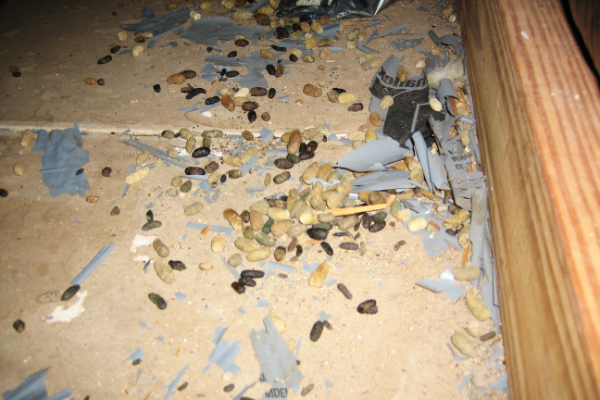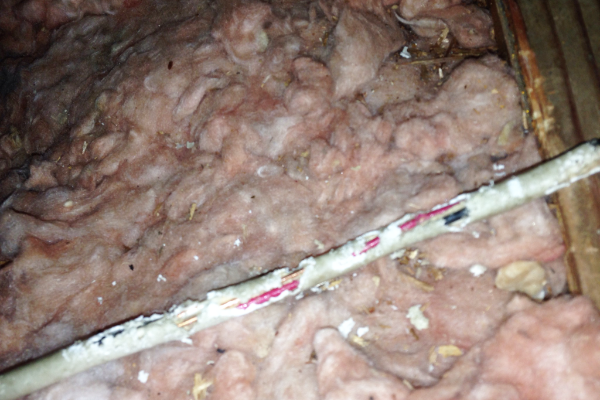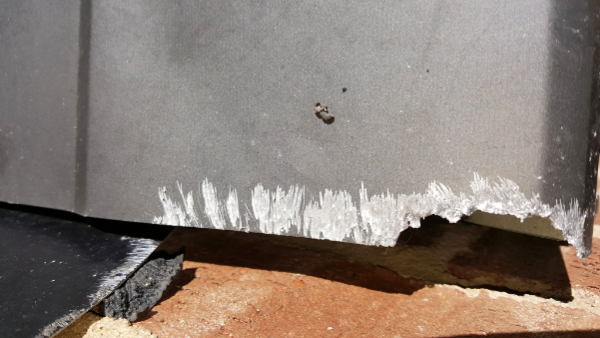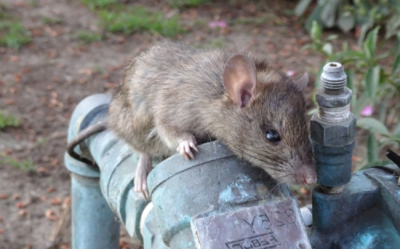Identification
Rats
We live alongside rats. They're in the woods and grasslands, they roam our sewers and alleyways, and unfortunately, they even invade our homes. In New York alone, the estimates for the number of rats range between 8 million to well over 30 million. Yet, how often do you ever see one?
Cautious and wary, rats are the masters of going unseen. Hidden underground or scurrying amongst the shadows, we usually don’t have any reason to notice them. But when a rat enters your home, it's a good idea to know what you're looking for!
Here we'll discuss the key factors to aid in identifying rats, as well as a breakdown of the damage they can cause.
Sounds
The first sign of a rat is often scurrying noises as the rodents move throughout a building. But you can also hear scratching, gnawing and squeaking too. As rats are nocturnal, you’re likely to hear the noises loudest at night or as you go to sleep.
Rats do also vocalize; however, many of the sounds are inaudible to human ears. This background chatter is mostly for excitement but constitutes only a small part of how rats communicate. Here's a breakdown of the key rat noises:
A Huff: a sigh or short breath of air – Considered a sign of annoyance. The rat wants to be left alone.
Pip or Peep: very short sharp noise – Associated with being groomed or manhandled by another rat or human. The rat is voicing a warning, the longer the sound, the greater the warning. Sometimes, rats might pip positively, but that is considered a learned behavior.
Long Squeak: an especially long peep – A severe warning. Most often heard during fighting or when defending food.
Scream or squeal: a long squeak – A sign of fear or extreme protest. Rats scream when young, as they have not developed the relevant social skills to understand a situation. Older rats squeal when cornered and severely provoked—sometimes accompanied by the rat standing on its hind legs, cowering backwards against a wall.
Hiss: an aggressive ‘huff’ – the sounds often precedes an attack or fight.
Poop
Rat droppings are amongst the easiest ways of identifying the presence of the creatures. Not surprising considering, on average, a rat will leave 25,000 droppings per year! Generally, rat droppings are pellet-shaped, not dissimilar to mouse droppings, but bigger – about ¾ inches long and 1/3 inches thick. As a general rule, if they're smaller than a grain of rice, they weren't left by a rat.
Whereas mouse droppings are found clustered together, rat droppings are disparate, as rats defecate while they move. Typically, you'll discover around 35 to 50 each day for every rat. An important clue, as mice droppings will number closer to 100.
Lastly, fresher, moister droppings indicate a rat which is still present. Use a pencil if you need to assess freshness. Do not pick up a dropping, as they are toxic, containing a myriad of diseases and parasites.
E. Coli and Salmonella are common bacteria found in rats. Both will give you a nasty stomach bug, but it could be worse. Weil's disease is deadly. The virus is found in rat’s urine, which they spread everywhere they go. Though it is only found in a small number of rats and rodents, it’s vital to be aware, as it is commonly mistaken for the flu.

Tracks
Naturally, rats are afraid of new objects and situations; as such, once a foraging path has been established, they will rarely stray far. Therefore, if you know what you're looking for, rat tracks can be easy to spot.
Check for size. The tracks will range from three-eighths to three-quarters of an inch long. Characteristically, there will be four widely-spaced toes for the front feet and five on the back. These tracks will be most visible in muddy or dusty locations. However, if you suspect a rat, cover the floor in flour or talc to capture fresh tracks the next day.
Aside from the tracks, rats can also leave rub marks from where their grease and dirt-covered bodies slide along skirting boards and walls running near their foraging paths. Older rats might leave marks on the floor where their tail slides along.
Damage


As a rats two front teeth never stop growing, they continuously need to gnaw. Black rats will climb into lofts, gnawing on the wires and cables which run through the roof space. While, on the other hand, brown rats will chew everything at ground level, shredding the insulation from wiring or tearing into plastic piping – often causing flooding from burst water pipes.
Unbelievably, rats have even been known to chew through wood or concrete, creating rat holes for use as part of their foraging paths. While you might be confident in hardwood skirting boards or brick walls, at the earliest sign of rot, rats will gnaw through.
If the rats have built a nest, then they'll begin scouting for soft and comfortable material to make a perfect birthing environment. Newspapers, clothing, upholstery or cushion-filler, will be shredded and carried away, down into a hole hidden somewhere in the house.
Be careful of eating any food a rat could have been near, as rodents typically contaminate much more food than will be visible. Diseases such as Salmonella or more severely hemorrhagic fever with renal syndrome can occur. So, contamination should be taken very seriously.
Finally, when rats find a location which meets their requirements, they will stick around in order to breed rapidly, leading to a much more difficult situation. In such circumstances, it is essential to rely on professionals and avoid contracting and spreading diseases.

